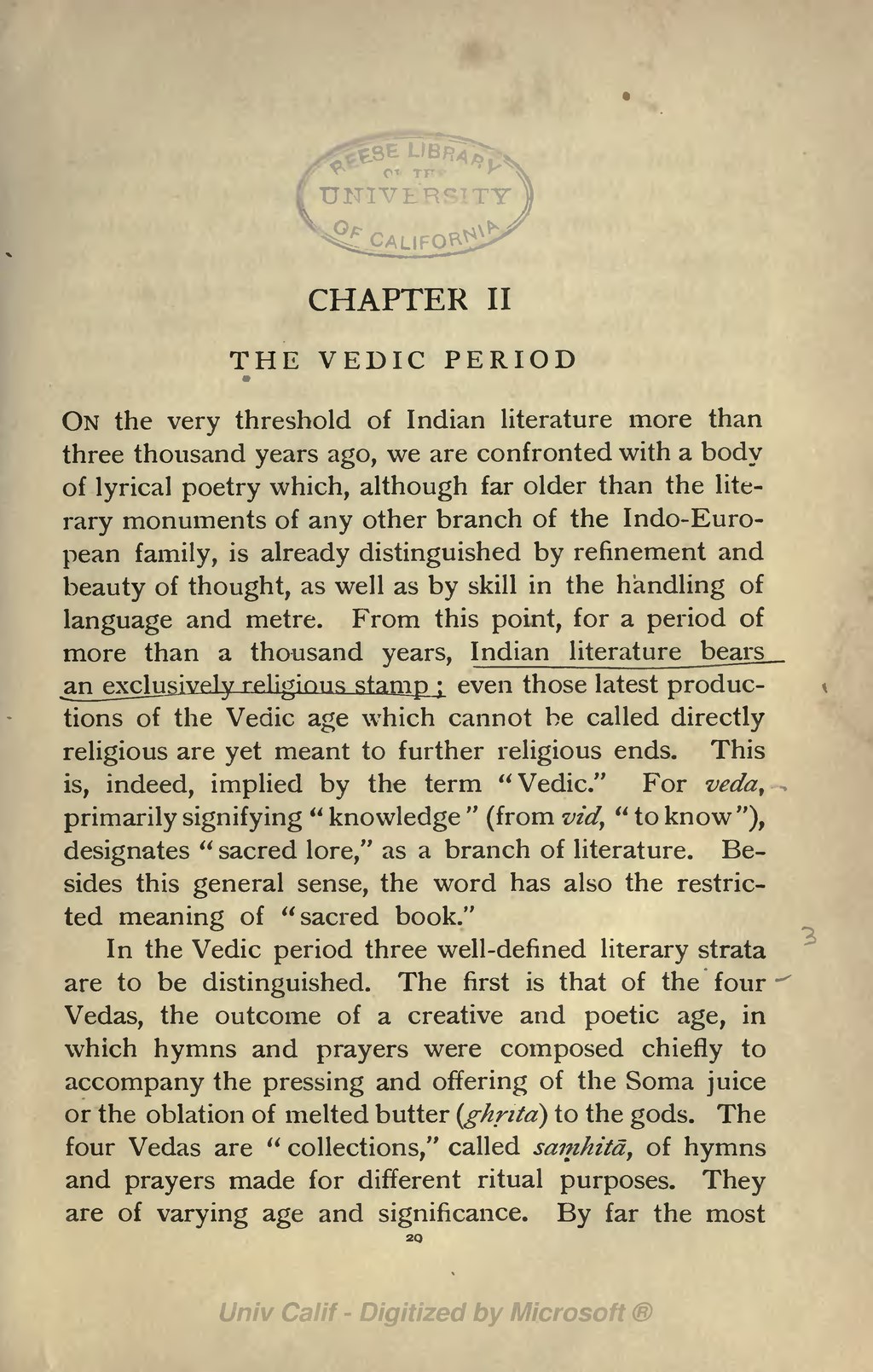CHAPTER II
THE VEDIC PERIODOn the very threshold of Indian literature more than three thousand years ago, we are confronted with a body of lyrical poetry which, although far older than the literary monuments of any other branch of the Indo-European family, is already distinguished by refinement and beauty of thought, as well as by skill in the handling of language and metre. From this point, for a period of more than a thousand years, Indian literature bears an exclusively religious stamp; even those latest productions of the Vedic age which cannot be called directly religious are yet meant to further religious ends. This is, indeed, implied by the term "Vedic." For veda, primarily signifying "knowledge" (from vid, "to know"), designates "sacred lore," as a branch of literature. Besides this general sense, the word has also the restricted meaning of "sacred book."
In the Vedic period three well-defined literary strata are to be distinguished. The first is that of the four Vedas, the outcome of a creative and poetic age, in which hymns and prayers were composed chiefly to accompany the pressing and offering of the Soma juice or the oblation of melted butter (ghṛita) to the gods. The four Vedas are "collections," called saṃhitā, of hymns and prayers made for different ritual purposes. They are of varying age and significance. By far the most
